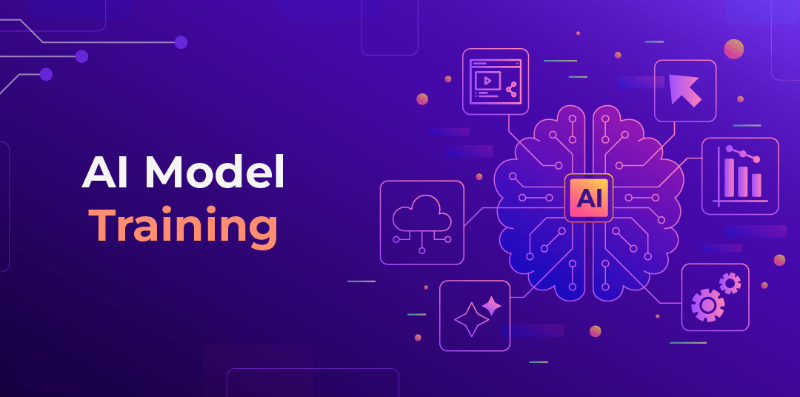I. Introduction: The Growing Demand for AI and GPU Resources
Artificial Intelligence is no longer a technology of the future; it is the engine of today’s innovation. From creating life-like chatbots and generating stunning images to accelerating drug discovery and powering self-driving cars, AI is fundamentally reshaping every industry it touches. But behind every groundbreaking AI application lies a tremendous amount of computational power. The brains of this operation? The Graphics Processing Unit, or GPU.
GPUs are the unsung heroes of the AI revolution. Unlike standard processors, their unique architecture allows them to perform thousands of calculations simultaneously, making them perfectly suited for the complex mathematical workloads of AI. Training a sophisticated model, like a large language model, is akin to building a super-brain from scratch, and this process is incredibly hungry for GPU resources.
However, this power comes at a cost. For AI enterprises, managing a cluster of GPUs—ensuring they are used efficiently, are available when needed, and don’t burn a hole in the budget—is a monumental challenge. This is where the conversation shifts from raw power to smart management.
Enter WhaleFlux, a smart GPU resource management tool designed specifically for AI-driven businesses. WhaleFlux addresses the core pain points of modern AI development: skyrocketing cloud costs and the slow, unstable deployment of large models. By intelligently optimizing how multi-GPU clusters are utilized, WhaleFlux doesn’t just provide access to power; it ensures that power is used in the most cost-effective and efficient way possible, letting companies focus on what they do best—innovating.
II. Understanding AI Model Training
A. What is AI Model Training?
At its heart, an AI model is a sophisticated digital student. AI model training is the process of teaching this student. Imagine showing a child millions of pictures of cats and dogs until they can reliably tell the difference. AI training works on a similar, albeit vastly more complex, principle.
The “student” here is a neural network, a computer system loosely modeled on the human brain. The “lessons” are massive datasets—could be text, images, numbers, or sounds. The goal of training is to adjust the model’s internal parameters (often called weights and biases) so that it can identify patterns, make predictions, or generate content based on the data it has seen. Key components of this process include:
- Data Preparation: Gathering, cleaning, and labeling the data to create a high-quality “textbook” for the model.
- Algorithm Tuning: Selecting the right learning algorithms and setting them up for success, much like choosing the right teaching method for a student.
B. How Are AI Models Trained?
The actual training process is a cycle of trial and error, refined over millions of iterations. Let’s break it down:
- Data Loading: The prepared dataset is fed into the model in small batches. This makes the massive amount of data manageable.
- Forward Propagation: A batch of data is passed through the model’s network, and it makes a prediction or “guess.” For a first pass, these guesses are almost always wrong.
- Loss Calculation: The model’s guess is compared to the correct answer (from the labeled data). The difference between the two is measured by a “loss function”—essentially, a score for how wrong the model was.
- Backward Propagation and Optimization: This is where the real learning happens. The model calculates how each of its internal parameters contributed to the error. It then works backward, adjusting these parameters slightly to reduce the mistake the next time. An “optimizer” algorithm determines the best way to make these adjustments.
This entire cycle is incredibly computationally intensive. Running these calculations for a large model on a standard CPU could take years. This is where powerful GPUs come in. GPUs like the NVIDIA H100 and NVIDIA A100 are designed with thousands of cores that can handle this workload in parallel, turning a potential years-long project into a matter of weeks or days. They are the high-performance classrooms where our digital student can learn at an accelerated pace.
C. Challenges in AI Training Model Development
Despite the power of modern GPUs, training AI models presents significant hurdles for businesses:
- High Computational Costs: The electricity and cloud bills for running dozens of high-end GPUs 24/7 can be astronomical. Training a single state-of-the-art model can cost millions of dollars.
- Resource Underutilization: Many companies struggle with “GPU sprawl”—owning or renting a cluster of GPUs but failing to use them efficiently. A GPU sitting idle is money wasted.
- Scalability: As models grow larger and datasets become more complex, a single GPU is not enough. Companies need to scale out to multi-GPU clusters, which introduces complexities in managing communication and workload distribution between the cards.
This is precisely where WhaleFlux transforms the training landscape. WhaleFlux acts as an intelligent overseer for your GPU cluster. Its smart resource management system dynamically allocates tasks across all available GPUs, ensuring that every card is working to its full capacity. By eliminating idle time and optimizing data flow between GPUs, WhaleFlux drastically reduces training time. A project that might have taken 50 days on an inefficient cluster could be cut down to 30 days. This not only speeds up innovation but directly translates to lower cloud computing costs, as you are paying for maximum output, not wasted potential.
III. Exploring Model Inference
A. What is Model Inference?
If training is the lengthy and expensive process of educating the model, then inference is the model’s final exam—and its subsequent career. Model inference is the stage where the fully trained model is put to work, making real-world predictions on new, unseen data.
When you ask a chatbot a question and it generates an answer, that’s inference. When your photo app automatically tags your friends, that’s inference. It’s the practical application of all that prior learning. The key difference is the environment: while training is a batch process focused on learning, inference often needs to happen in real-time, with low latency, to provide a seamless user experience.
B. Key Aspects of an Inference Model
A successful inference system isn’t just about accuracy; it’s about performance. Three key metrics define its effectiveness:
- Latency: The time delay between receiving a request and delivering a response. For a user interacting with an AI, low latency (a fast response) is critical.
- Throughput: The number of inferences the model can handle per second. A high-throughput system can serve millions of users simultaneously.
- Stability: The system must be reliable and consistently deliver results without crashing or slowing down, even under heavy load.
Different GPUs are optimized for different aspects of inference. For instance, the NVIDIA RTX 4090 is an excellent card for cost-effective, lower-scale inference tasks, offering great performance for its price. On the other hand, the NVIDIA H200, with its massive and fast memory bandwidth, is engineered for deploying the largest models, ensuring high throughput and minimal latency for the most demanding applications.
C. Overcoming Inference Bottlenecks
Deploying models for inference brings its own set of challenges:
- Resource Contention: What happens when multiple models or users are competing for the same GPU resources? Without proper management, this can lead to traffic jams, skyrocketing latency, and a poor user experience.
- High Cloud Expenses: Running inference servers 24/7 on a major cloud platform is a recurring and significant operational expense. Inefficient resource usage during inference can lead to surprisingly high bills.
WhaleFlux plays a pivotal role in creating a smooth and cost-effective inference pipeline. Its management tools allow for intelligent workload scheduling and resource allocation, preventing contention and ensuring that critical inference tasks get the GPU power they need without delay. By maximizing the utilization of each GPU dedicated to inference—be it a fleet of A100s for heavy lifting or RTX 4090s for specific tasks—WhaleFlux ensures high stability and speed. This means your AI application remains responsive and reliable for end-users, all while keeping your ongoing deployment costs under control.
IV. How WhaleFlux Enhances AI Workflows
A. Overview of WhaleFlux’s GPU Offerings
At the core of WhaleFlux is access to a curated fleet of the most powerful and relevant NVIDIA GPUs on the market. We understand that different stages of the AI lifecycle have different needs, which is why we offer a range of options:
- NVIDIA H100 & H200: The powerhouses for large-scale model training and high-throughput inference. Their specialized Transformer Engine makes them ideal for the latest large language models.
- NVIDIA A100: The versatile industry workhorse, excellent for both training and inference of a wide variety of models.
- NVIDIA RTX 4090: A cost-effective solution for experimentation, smaller model training, and mid-range inference workloads.
We provide flexibility through both purchase and rental options, allowing you to choose what best fits your financial strategy. To ensure stability and predictability for both our systems and your budgeting, our rentals are committed monthly or longer, and do not support volatile, on-demand hourly billing.
B. Benefits for AI Model Training and Inference
WhaleFlux is more than just a GPU provider; it’s a force multiplier for your AI team.
- For Training: By using WhaleFlux’s intelligent management to orchestrate a cluster of NVIDIA H100s, you can achieve near-linear scaling in your training speed. This means cutting down the time-to-market for your models from months to weeks, a crucial competitive advantage. The efficiency gains directly lower your total computing cost per training run.
- For Inference: Deploying your model on a WhaleFlux-managed array of A100s guarantees that your application can handle traffic spikes without breaking a sweat. The intelligent resource pooling ensures high availability and consistent latency, providing a superior experience for your customers. You pay for a stable, high-performance inference platform, not for over-provisioned and under-utilized cloud instances.
C. Real-World Applications
Consider a tech startup developing a new generative AI assistant. They need to:
- Train a foundational model on a massive dataset of text and code.
- Deploy the model for millions of users to interact with in real-time.
Without WhaleFlux, the training phase could be prohibitively expensive and slow, draining their venture capital. The inference phase could be unstable, leading to slow response times and user churn.
With WhaleFlux, they can rent a cluster of H100s to accelerate training by 40%, saving both time and money. For deployment, they can use a dedicated set of H200 and A100 GPUs, managed by WhaleFlux, to ensure their chatbot is fast, reliable, and scalable. The result is a successful product launch and a healthy bottom line.
V. Conclusion: Empowering AI Innovation with WhaleFlux
The journey of an AI model, from its initial training to its final deployment, is paved with computational challenges. In this landscape, efficient GPU management is not a luxury; it is a strategic necessity. It is the key to controlling costs, accelerating development cycles, and delivering robust AI-powered applications.
WhaleFlux is designed to be your partner on this journey. We provide the powerful NVIDIA GPU hardware you need, combined with the intelligent software that ensures you get the most out of every dollar spent. We help you streamline both the training and inference processes, turning GPU management from a source of anxiety into a competitive edge.
Are you ready to build and deploy your AI models faster, more reliably, and for less? Explore how WhaleFlux can transform your AI workflows. Visit our website to learn more about our GPU offerings and discover a smarter way to power your innovation. Let’s build the future, efficiently.

